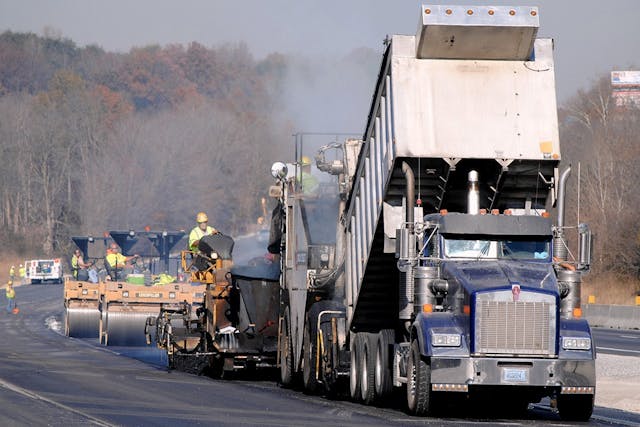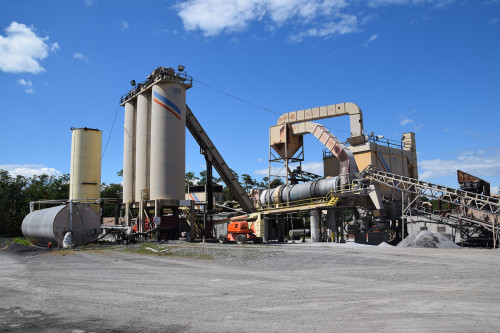Experience the Distinction: Hot Mix Asphalt Paving for Regrading Projects
Experience the Distinction: Hot Mix Asphalt Paving for Regrading Projects
Blog Article
Unlocking the Secrets of Hot Mix Asphalt Modern Technology
Exploring the depths of hot mix asphalt technology uncovers a world where precise processes and precise formulations converge to shape our roadways and framework. The blend of fillers, binders, and aggregates isn't simply a building task however a calculated orchestration of sturdiness and performance. As we peer right into the intricate dancing of components, a tapestry of resilience and sustainability unfolds. Yet what lies underneath this surface area of asphaltic proficiency, and what secrets wait to be unveiled in the world of leading developments?
Significance of Warm Mix Asphalt
Warm Mix Asphalt plays a critical role in modern infrastructure advancement due to its toughness and cost-effectiveness. As the most generally made use of leading material for roads, highways, and vehicle parking great deals, Warm Mix Asphalt uses an array of advantages that add to its relevance in building projects.
The toughness of Hot Mix Asphalt stems from its make-up, which consists of aggregates, binder, and filler products that are very carefully selected and blended to satisfy specific efficiency requirements. On the whole, the value of Hot Mix Asphalt in framework advancement can not be underrated, as it continues to be a cornerstone of contemporary construction techniques.
Components of Asphalt Mixes
The make-up of asphalt mixes is composed of thoroughly picked aggregates, binder, and filler products that are important for attaining particular efficiency requirements. Accumulations are the primary element of asphalt blends, offering toughness and stability. These accumulations can be all-natural, such as gravel or smashed rock, or synthetic, like recycled products from old sidewalks. The binder, commonly bitumen or asphalt concrete, holds the accumulations together and supplies adaptability and sturdiness to the mix. The option of the binder is essential as it directly affects the mix's efficiency in different weather condition problems. Fillers, such as moisturized lime or Portland cement, are utilized to boost the mix's workability and aging resistance. Angled Parking.
The mix and percentage of these elements play a substantial duty in establishing the top quality and efficiency of the asphalt mix. Designers carefully design the mix to meet specific requirements, considering factors like traffic volume, environment problems, and sidewalk life expectancy. Appropriate choice and balancing of aggregates, binder, and fillers are vital for producing resilient, lasting asphalt pavements.
Combining and Manufacturing Methods

Once the aggregates are selected, the binder, typically asphalt concrete, is contributed to basics bind the products together. The binder's high quality and quantity substantially influence the mix's versatility, resistance, and stamina to environmental factors. Additionally, fillers like moisturized lime or Rose city concrete may be incorporated to enhance specific characteristics of the asphalt mix, such as its workability or dampness resistance.
Throughout manufacturing, the aggregates and binder are heated, typically in between 250-325 ° F(121-163 ° C ), to promote blending and guarantee proper coating of the accumulations. The blending process must be detailed to attain a homogeneous mixture that advertises the preferred performance characteristics of the asphalt. Numerous methods, such as batch blending or drum mixing, are used to accomplish consistent and high-quality asphalt mixes for building and construction jobs.
Factors Influencing Asphalt Performance
Elements affecting asphalt efficiency encompass a variety of variables that influence the resilience, long life, and total quality of asphalt pavements. One vital factor is the high quality of products made use of in the asphalt mix.

Environmental problems also affect asphalt performance. Temperature level variations, dampness seepage, and web traffic lots can all impact the architectural integrity of the sidewalk. Layout considerations, such as sidewalk thickness and drain, are essential in making sure the long-term performance of the asphalt sidewalk. By carefully thinking about these designers, contractors and aspects can optimize asphalt performance and boost the solution life of sidewalks.
Lasting Practices in Asphalt Modern Technology

Additionally, the development of warm-mix asphalt (WMA) modern technologies has actually gotten traction in recent times. WMA enables the manufacturing and positioning of asphalt mixes at lower temperature levels compared to conventional hot-mix asphalt, resulting in lowered power consumption and greenhouse gas emissions. The usage of porous asphalt blends can assist mitigate stormwater drainage problems by allowing water to penetrate through the sidewalk and into the ground, advertising natural water purification and charge procedures. By carrying out these sustainable methods, the asphalt industry can contribute to constructing a much get redirected here more eco-friendly and resistant framework network.
Verdict
In final thought, warm mix asphalt innovation plays a critical duty in modern-day facilities development due to its toughness and cost-effectiveness. check here By meticulously balancing parts, using correct blending strategies, and thinking about numerous elements, designers can produce top quality asphalt mixes that withstand heavy web traffic tons and rough weather. Accepting sustainable methods, such as using warm-mix technologies and recycled products, better boosts the ecological friendliness of asphalt innovation.
Mixing and manufacturing strategies in warm mix asphalt innovation involve the specific mix and processing of aggregates, binder, and fillers to develop a long lasting and high-performance asphalt mix.Elements influencing asphalt efficiency include a range of variables that influence the toughness, durability, and overall top quality of asphalt sidewalks. Sustainable techniques in asphalt innovation encompass numerous efforts intended at minimizing the environmental influence of asphalt production and paving procedures. By including reclaimed asphalt pavement (RAP) and recycled asphalt tiles (RAS) into brand-new asphalt mixes, the sector can significantly lower the usage of raw materials and energy, while also reducing landfill waste.
WMA permits for the production and positioning of asphalt mixes at lower temperature levels compared to typical hot-mix asphalt, resulting in decreased power usage and greenhouse gas exhausts.
Report this page